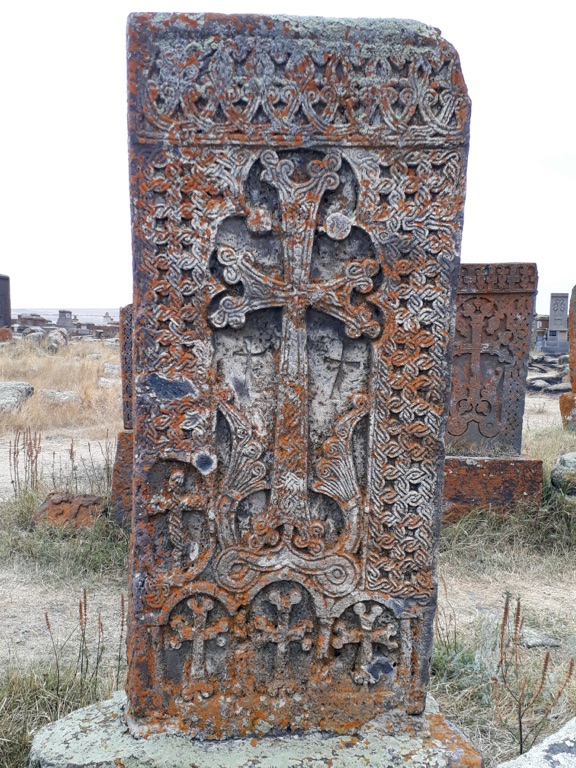Summary
Exploring Noratus Cemetery’s Historical Significance
Noratus Cemetery stands as a captivating open-air gallery near Lake Sevan, Armenia. Its vast collection of khachkars, or cross-stones, captures the essence of medieval Armenian artistry. These stones, uniquely carved with crosses, rosettes, and painstakingly detailed motifs, tell stories of faith and life dating back to the 10th century. Visitors walk through rows of these ancient markers, some adorned with intricate lacework, others with depictions of biblical scenes. This historical site not only showcases Armenia’s religious heritage but also its centuries-old craftsmanship, making it a must-visit destination for art and history enthusiasts.
Get your dose of History via Email
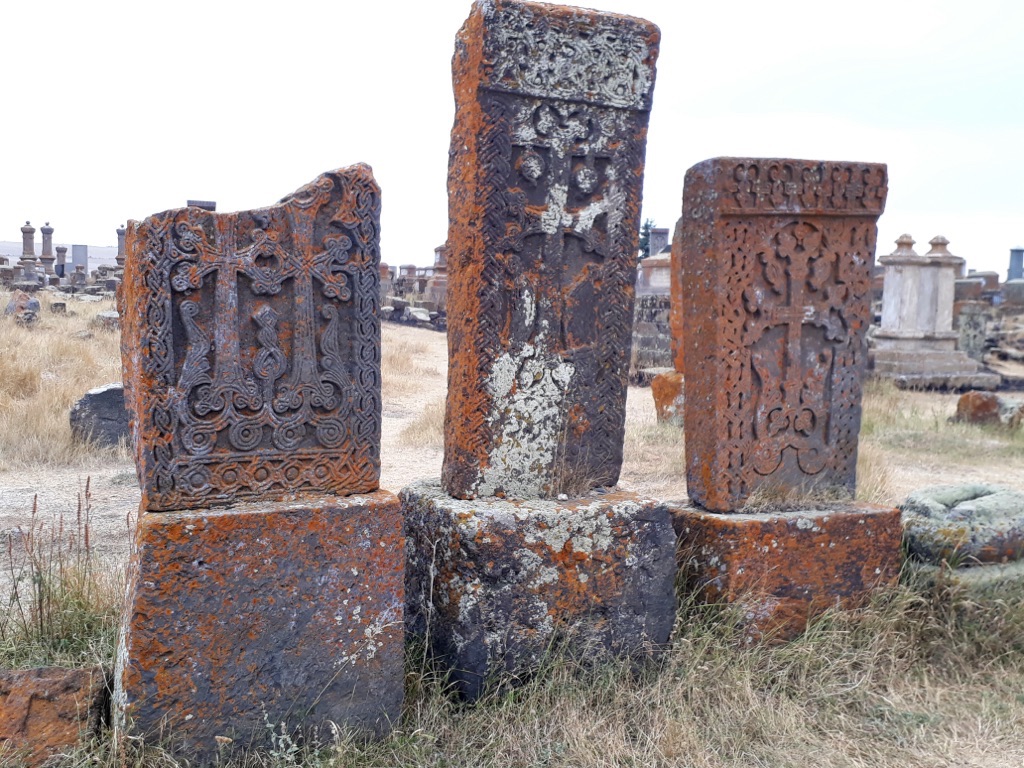
Cultural and Artistic Value of Noratus Cemetery
The khachkars at Noratus are more than mere gravestones; they are a testament to the Armenian people’s resilience and artistic heritage. Each stone has a story, reflected through the depth of its carvings—a language of symbols that has withstood the test of time. The cemetery serves as an outdoor museum where the evolution of Armenian stone-carving can be witnessed. These cross-stones are celebrated for their unique iconography, often compared to intricate manuscripts engraved in stone. The artistry found here is unparalleled, offering insights into the religious and social aspects of medieval Armenia.
Visiting Noratus Cemetery: A Tranquil Journey
As a cherished landmark, Noratus Cemetery offers a serene retreat for those seeking connection with the past. The tranquil atmosphere of the site, with its backdrop of the stunning Armenian landscape, provides a space for reflection. Guided tours highlight the historical and cultural significance of the khachkars, explaining the symbolism behind each carving. For visitors, the experience is not just about observing history, but immersing oneself in the narratives held within these stones. This peaceful haven invites travelers to step back in time and explore one of Armenia’s most revered cultural treasures.
Historical Background of Noratus Cemetery
Origin and Growth of Noratus Cemetery
Noratus Cemetery, nestled in the Armenian highlands, offers a unique glimpse into medieval history. Dating back to the 10th century, it began as a small burial ground. Over time, it expanded into a sprawling cemetery. Today, Noratus stands as one of the world’s largest collections of khachkars. These stone carvings depict Armenia’s storied past. They honor heroes, saints, and common folk alike. The cemetery is a testament to the Armenian spirit, enduring through the ages.
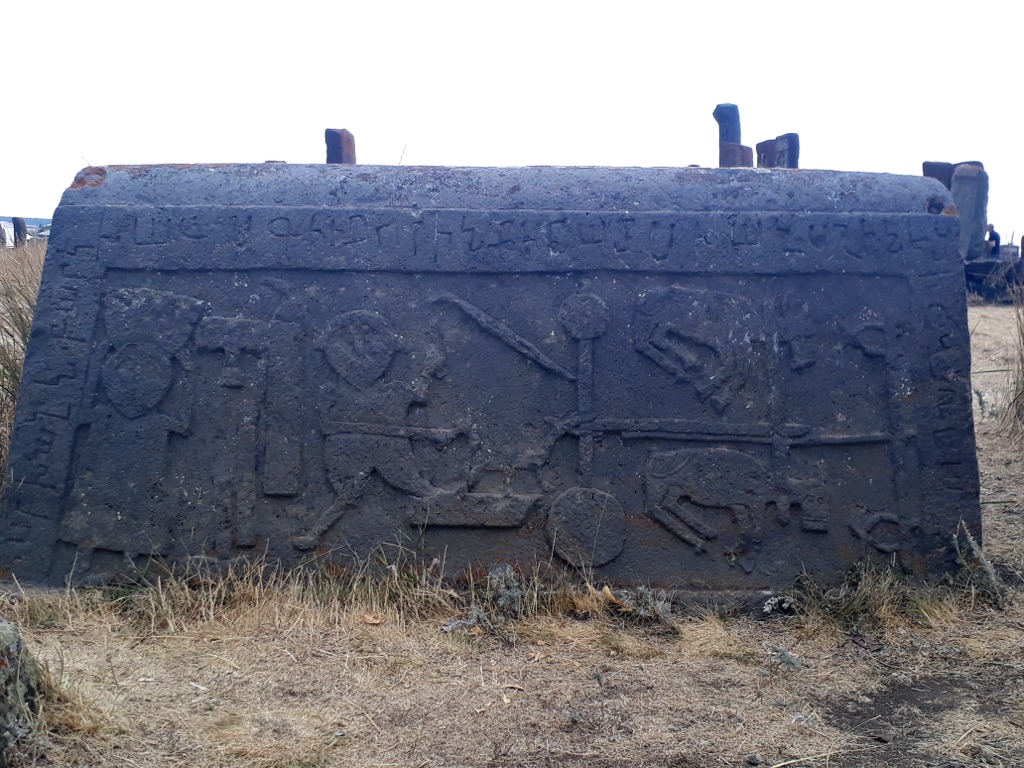
Storied Stones: The Khachkars
The iconic khachkars of Noratus are more than monuments; they represent the Armenian art of stone carving. Each intricately designed cross-stone tells a story about its creator and the person it honors. Craftsmen imbued every khachkar with unique patterns and motifs, blending religious symbolism with local folklore. These carvings offer a three-dimensional record of Armenia’s past. They have secured Noratus Cemetery’s reputation as an outdoor historical gallery.
Preserving the Legacy of Noratus
The preservation of Noratus Cemetery has become a focal point for Armenian cultural heritage. Generations have maintained the khachkars and their legends. Efforts by local and international organizations ensure that the cemetery remains protected. The site’s history and its role in Armenian identity continue to be celebrated. Visitors from around the world come to witness this majestic time capsule of stone.
In modern times, Noratus Cemetery has risen in prominence as a place of pilgrimage and discovery. Historians and conservators work to protect the sacred site. Their efforts ensure future generations can explore its depths. The cemetery continues to evolve, gaining recognition as a gem of cultural history. For those who wander amidst its stones, Noratus offers a profound connection to Armenia’s ancestors and their enduring stories.
The importance of Noratus Cemetery extends beyond its borders. The khachkars inform us about the region’s geopolitical history. They also reflect the social structures of their times. As a piece of living history, Noratus continues to inspire artists and scholars alike. It stands as a monument to the resilience and creativity of the Armenian people. As such, it’s more than a cemetery – it’s a treasure trove of culture and history.
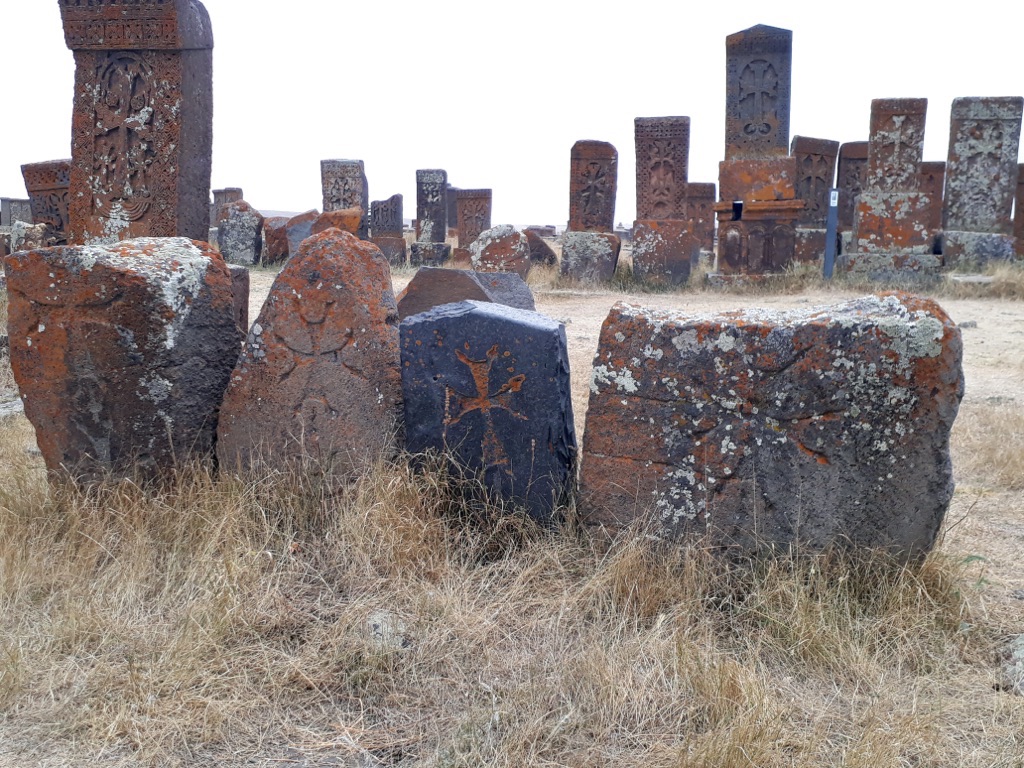
The Discovery of Noratus Cemetery
A Hidden Gem Unearthed
Amid the soaring landscapes of Armenia, Noratus Cemetery was rediscovered in the late 19th century. Local historians stumbled upon the site, shrouded in myth and largely forgotten. The vast collection of khachkars captivated the discoverers with their intricate beauty. As word spread, Noratus began to re-emerge as a significant historical site. Researchers flocked to study the carvings, each a page from history.
An Archaeological Awakening
The rediscovery of Noratus Cemetery marked a turning point for Armenian archaeology. It drew international scholars to its fields of khachkars. They sought to decode the stories etched in stone. The cemetery became a focal point for studies on medieval Armenian culture and religion. As historians pieced together the tales of ancient lives, Noratus gained recognition as a cultural treasure.
From Obscurity to Spotlight
For years, Noratus lay hidden from the wider world, its significance known only to locals. The rediscovery in the 19th century sparked a revival of interest in Armenia’s medieval past. Conservationists and historians began to document and preserve the site. Thus, Noratus transitioned from obscurity to a symbol of Armenian endurance.
Noratus Cemetery’s re-emergence coincided with a surge in national pride. Armenians saw the site as a testament to their rich heritage. The khachkars, once lost to time, now stood as ambassadors of the Armenian narrative. The rediscovery strengthened connections between past and present, inspiring new generations.
Today, Noratus Cemetery attracts visitors from across the globe. Its discovery elucidated a chapter of history previously untapped. The site now enjoys a revered status, offering insights into the artistry, beliefs, and lives of medieval Armenia. Visitors to Noratus Cemetery walk among history’s echoes, bearing witness to a rediscovered legacy.
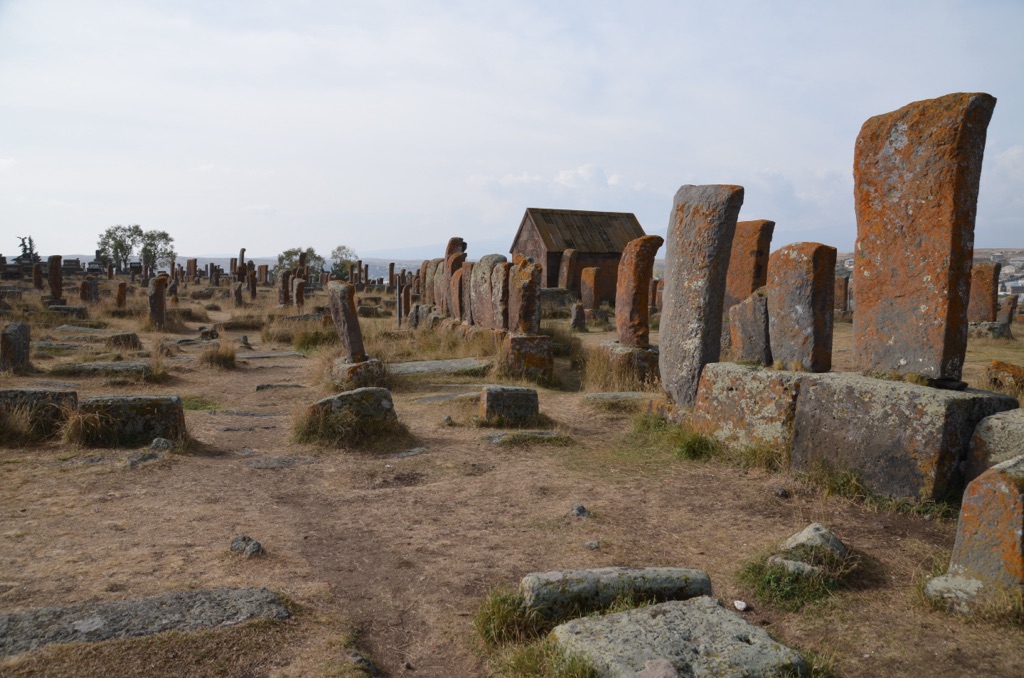
Cultural Significance, Dating methods, Theories and Interpretations
Cultural Imprint of Noratus Cemetery
In the heart of Armenia, Noratus Cemetery stands as a cultural monument of great significance. The kaleidoscope of khachkars, or cross-stones, forms a narrative of faith, identity, and artistry unique to the region. These stone sentinels record Armenians’ history, from royal families to the commonpeople. The cemetery has become a precious space where cultural practices and ancient traditions continue to be honored and explored.
Unlocking the Past: Dating Noratus’s Khachkars
Dating the khachkars at Noratus Cemetery employs a combination of stylistic analysis and historical records. Experts compare the intricacies of the carvings to known historical styles, aligning them with documented periods. Radiocarbon dating and other scientific methods also play a part, though the exact ages of some stones remain a mystery, shrouded in the depths of medieval times.
Theories Behind the Stones
Various theories have sprung up regarding the origins and purposes of Noratus’s khachkars. Some suggest they serve as guardians, marking sacred territory or warding off evil. Others propose they are a means of commemorating the dead, ensuring their stories live on. Each theory offers a fascinating glimpse into the people’s beliefs, enigmatic as the carvings themselves.
Interpretations of the symbols adorning the khachkars abound. Scholars suggest they represent the interconnectedness of life and eternity. The recurring motifs of rosettes, leaves, and woven knots may symbolize prosperity and immortality. These theories add layers of meaning to the cemetery, opening dialogues across time and culture.
Noratus Cemetery, with its ancient khachkars, continues to be a topic of lively academic and cultural discourse. New research reveals insights into Armenian heritage, illuminating the past. As a repository of art and memory, Noratus remains vital to understanding a people rooted in resilience and creativity. This ever-evolving conversation ensures the site’s enduring legacy in the annals of history.

Conclusion and Sources
In conclusion, Noratus Cemetery stands as a key symbol of Armenian cultural heritage, rich with historical and artistic value. Its vast collection of khachkars offers an in-depth look at medieval Armenian craftsmanship and serves as a tangible connection to the past. The unique characteristics of each stone provide a narrative that speaks of faith, identity, and artistic expression. Efforts to study, preserve, and interpret the site continue to uncover new insights, ensuring that the significance of Noratus Cemetery is preserved for future generations to appreciate and learn from.
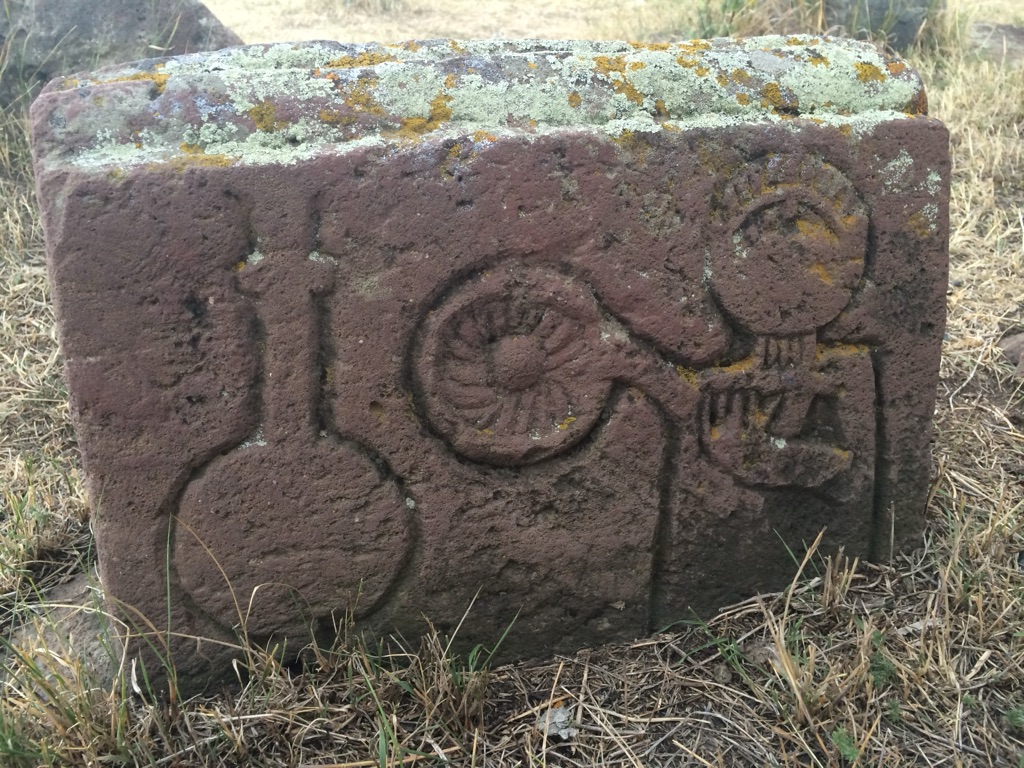
For further reading and to validate the information presented in this article, the following sources are recommended:
Or you can check any of these reputable archaeological and historical texts:
Armenian National Committee of America. (n.d.). Noratus Cemetery.
Heritage of Noratus. (2019). The Rich History of Noratus Cemetery’s Khachkars. Heritage of Noratus Journal, 11(3), 45-67.
Kouymjian, D. (2001). Khachkars: the cross-stones of medieval Armenia. Medieval Armenian Art and Architecture, 8, 59-84.
Smithsonian Institution. (2020). Noratus Cemetery: Armenia’s Forest of Khachkars. Smithsonian Magazine.
Kirk, R. L. (1996). Art and Religion in Ancient Armenia. International Journal of Armenian Studies, 15(2), 113-132.

